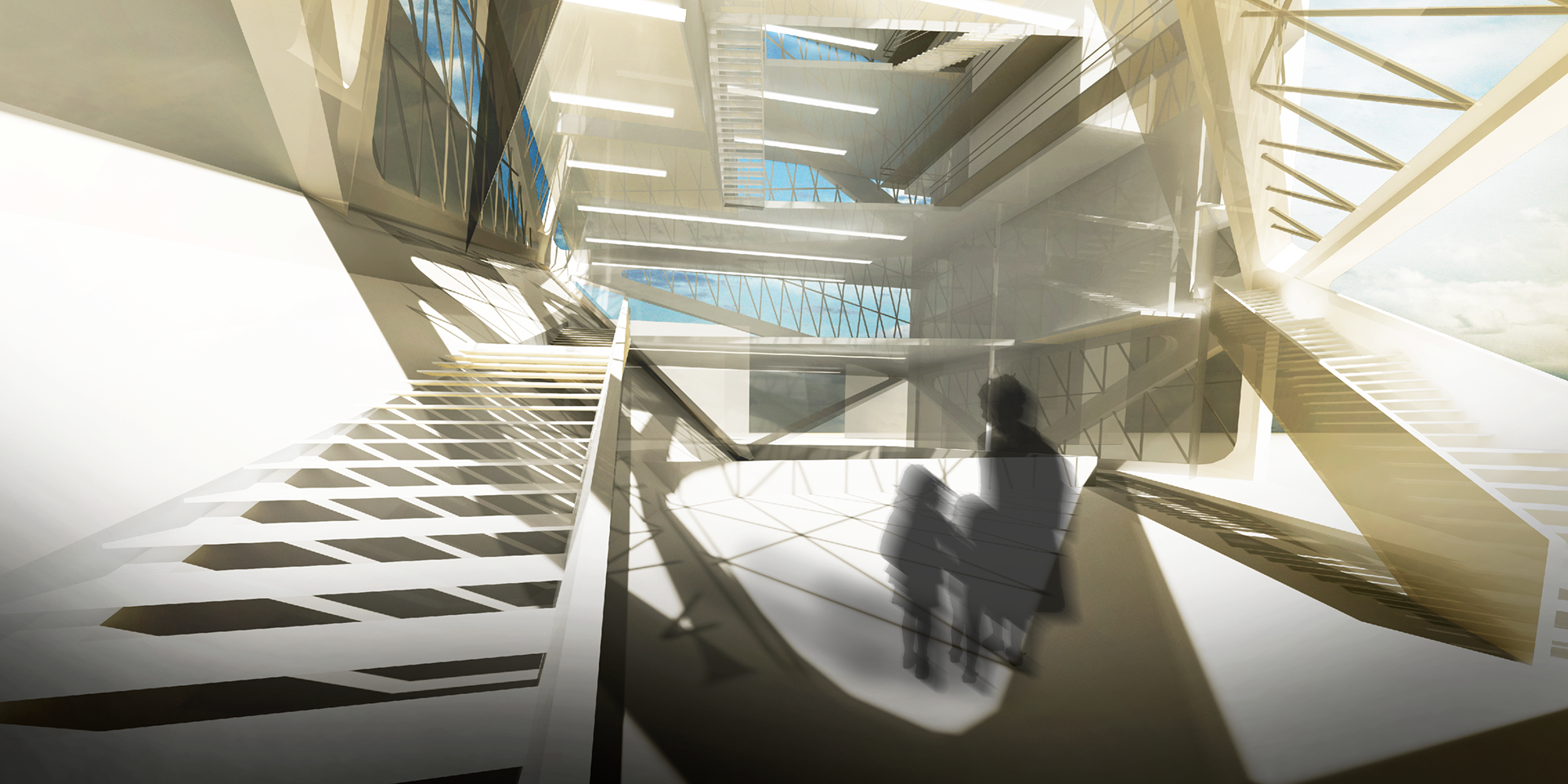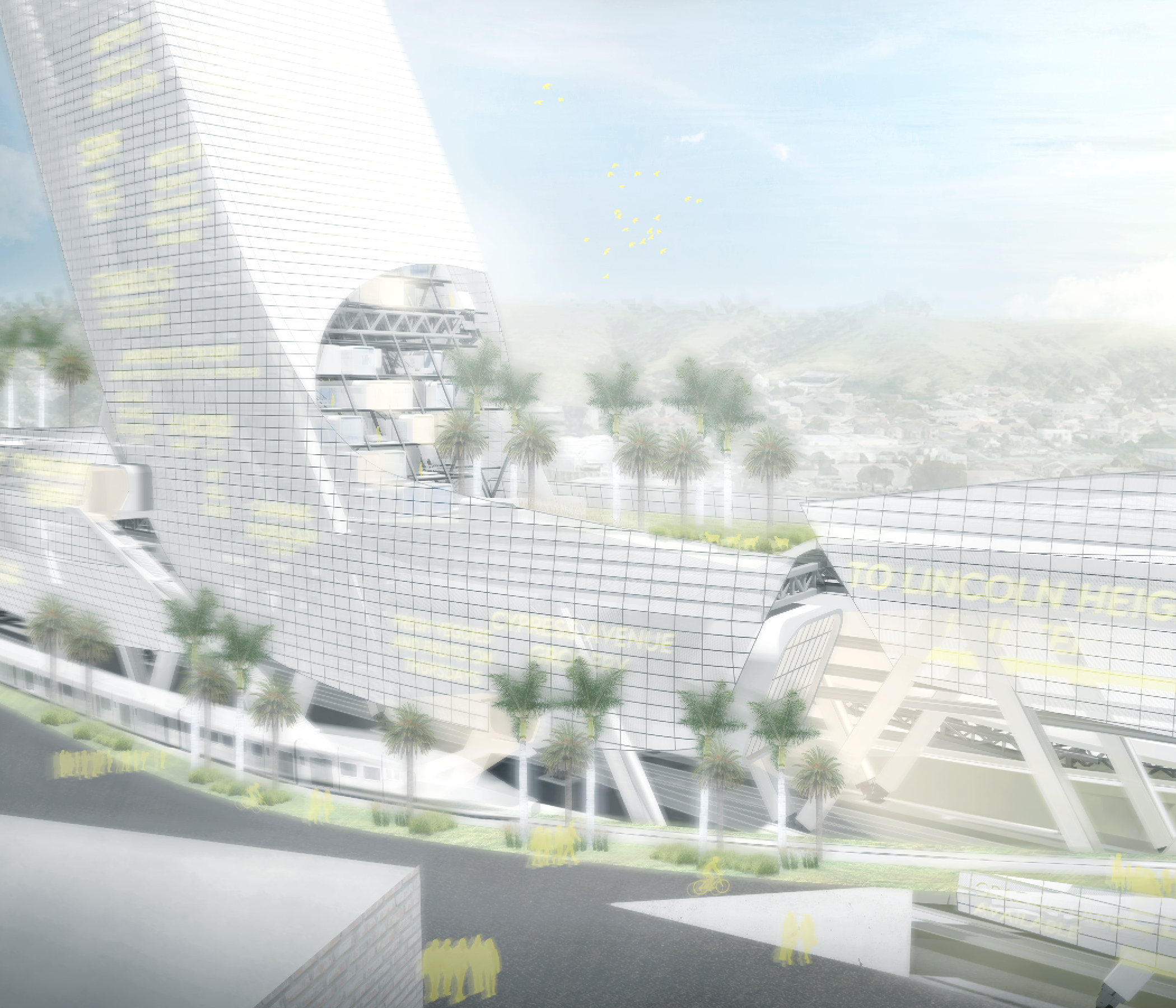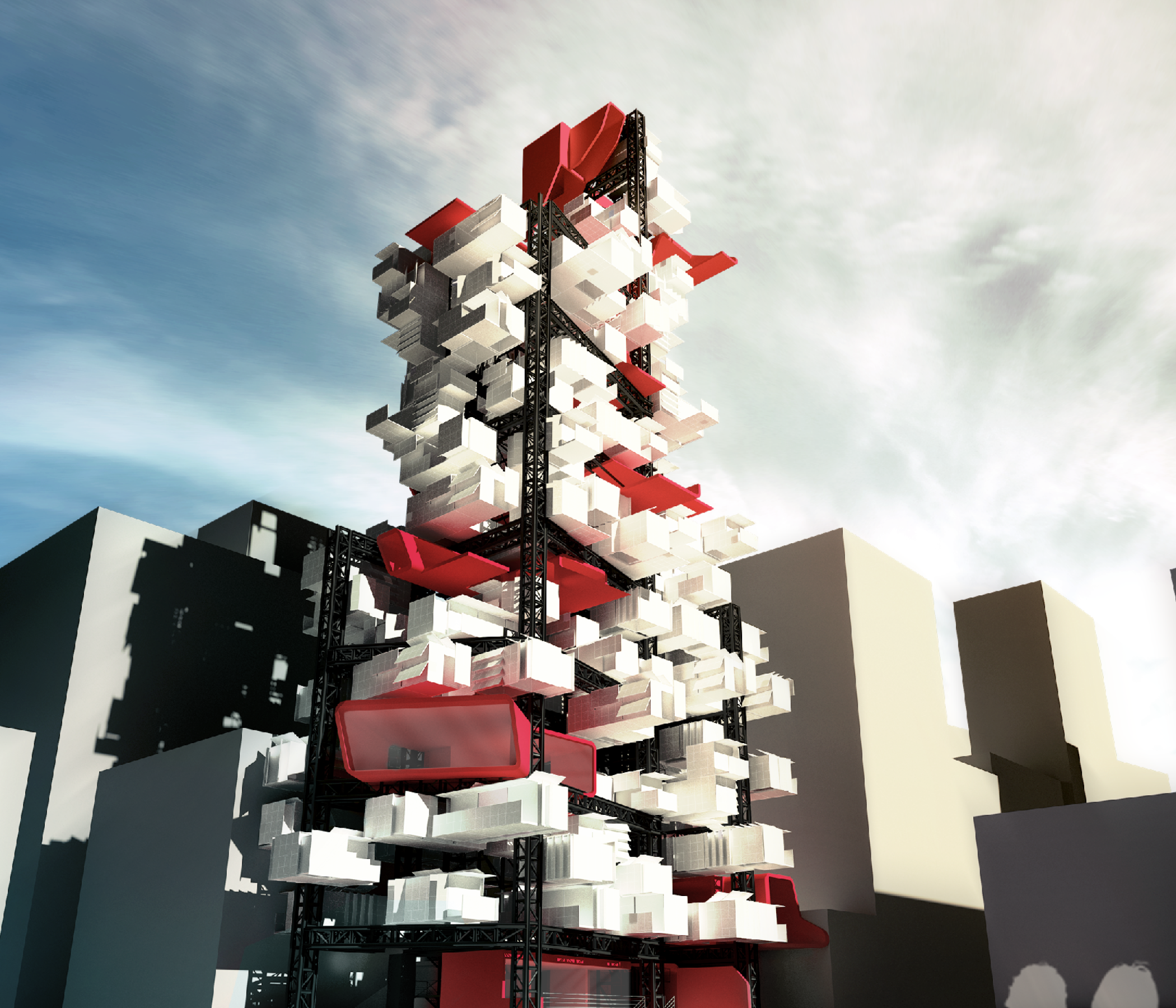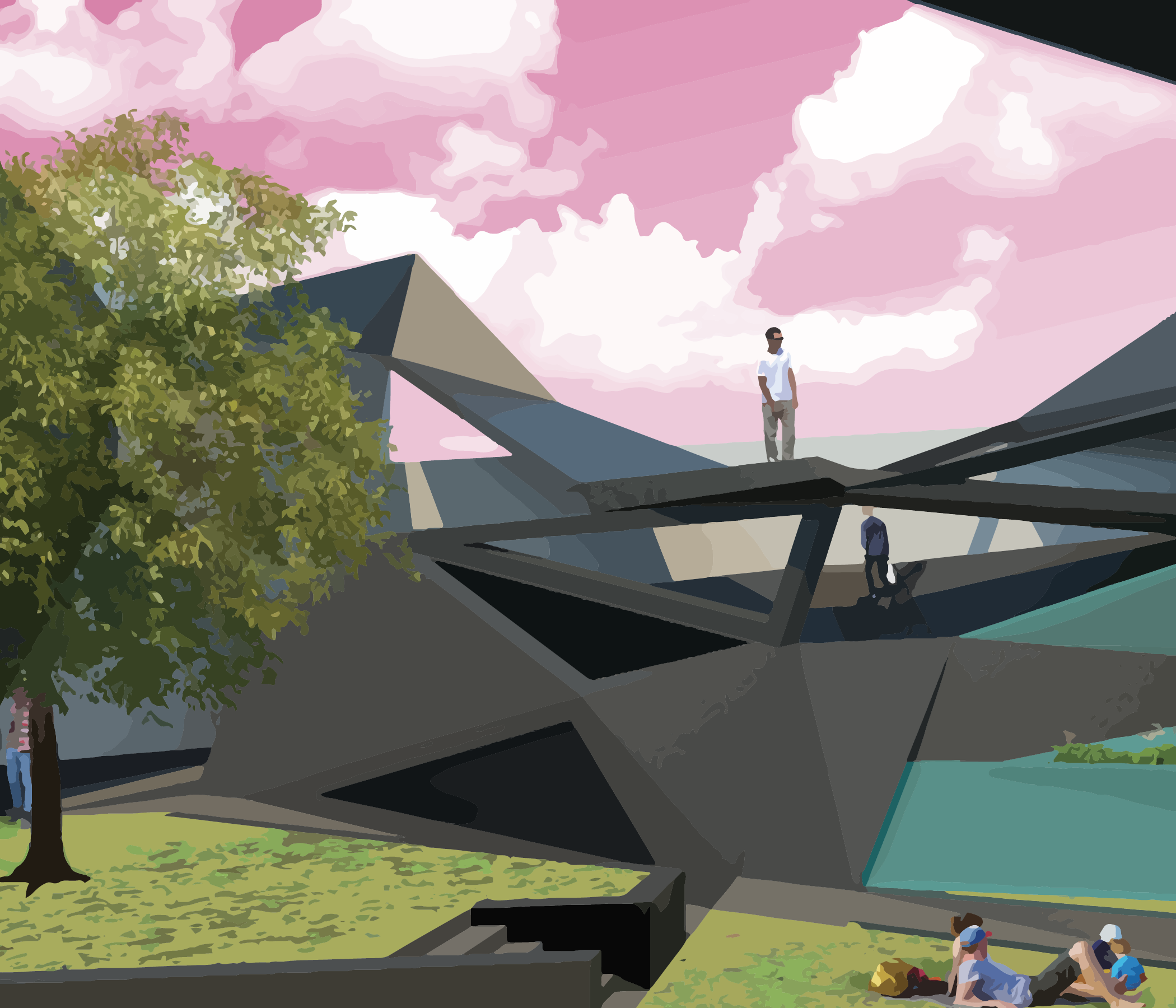fall quarter, 2020 cal poly, studio fowler
Narrative
In 2020, Boeing faces iminent bankruptcy. Years of bad publicity, grounded aircraft, and a failure to address environmental concerns leaves the renowned company in dire straits.
In a desperate last-ditch effort to save the company, Boeing pivots to a reemerging field that has the potential to drastically change the commercial flight industry:
Zeppelins.
With new advancements in technology, could zeppelins provide a truly green alternative for future air travel?
Determined to succeed, Boeing sets out to reinvent the flight industry. Positing a future that values slow and experientially rich travel, they set out to introduce the zeppelin to the world.
A new format for the airport takes shape. Unencumbered by sprawling runways and literal tons of pollutants, the air terminal of the future exists as a tower in the city center, accessible and visible to all. Taking advantage of its strategic position and beacon-like existence, the structure houses a gallery and amphitheater to assist in promoting and re-educating the public for the new wave of travel. The beacon is accessible and visible to all; proximity and public outreach aim to ease the transition to the new format for long-distance travel.
Early Iterations and Process Work
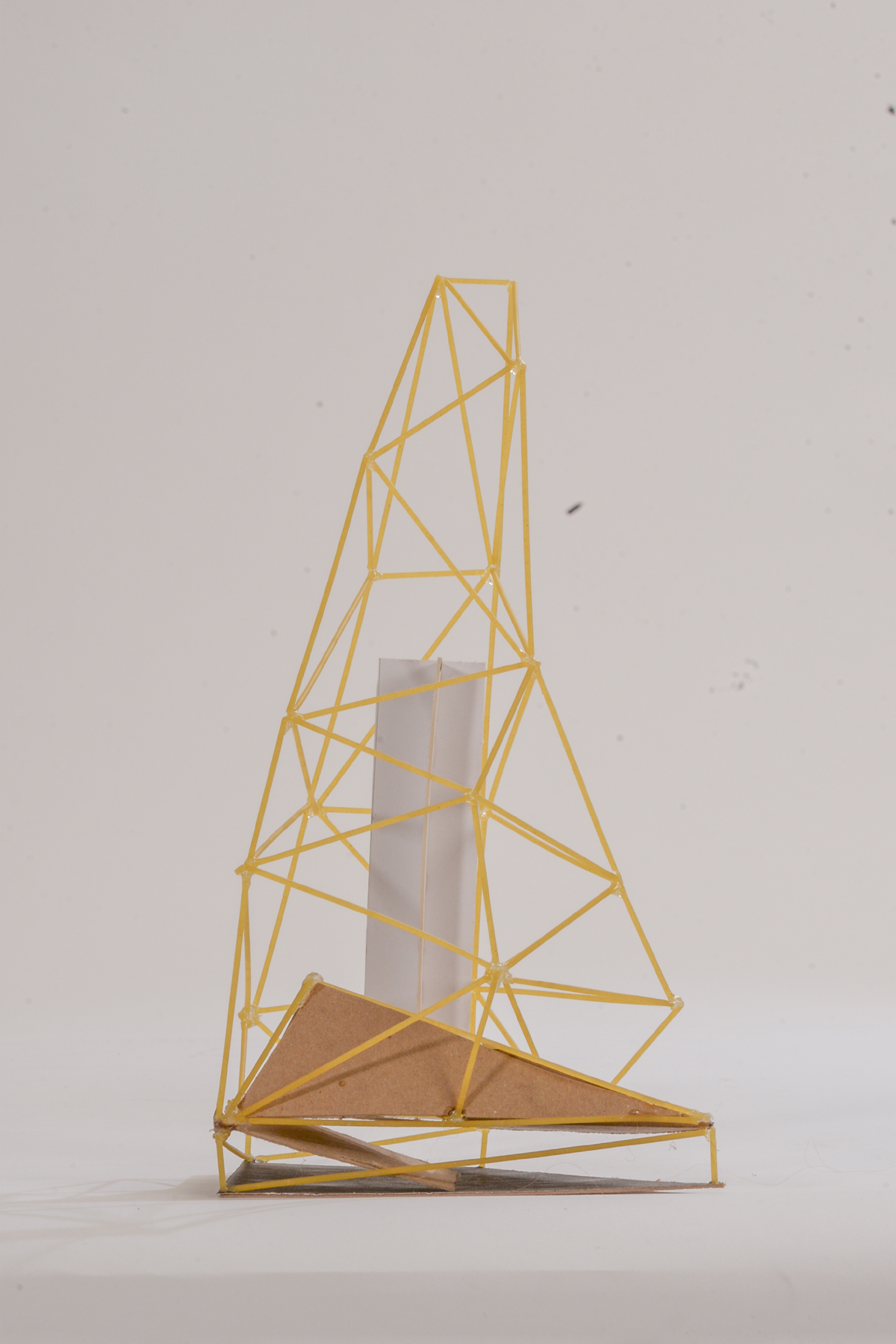
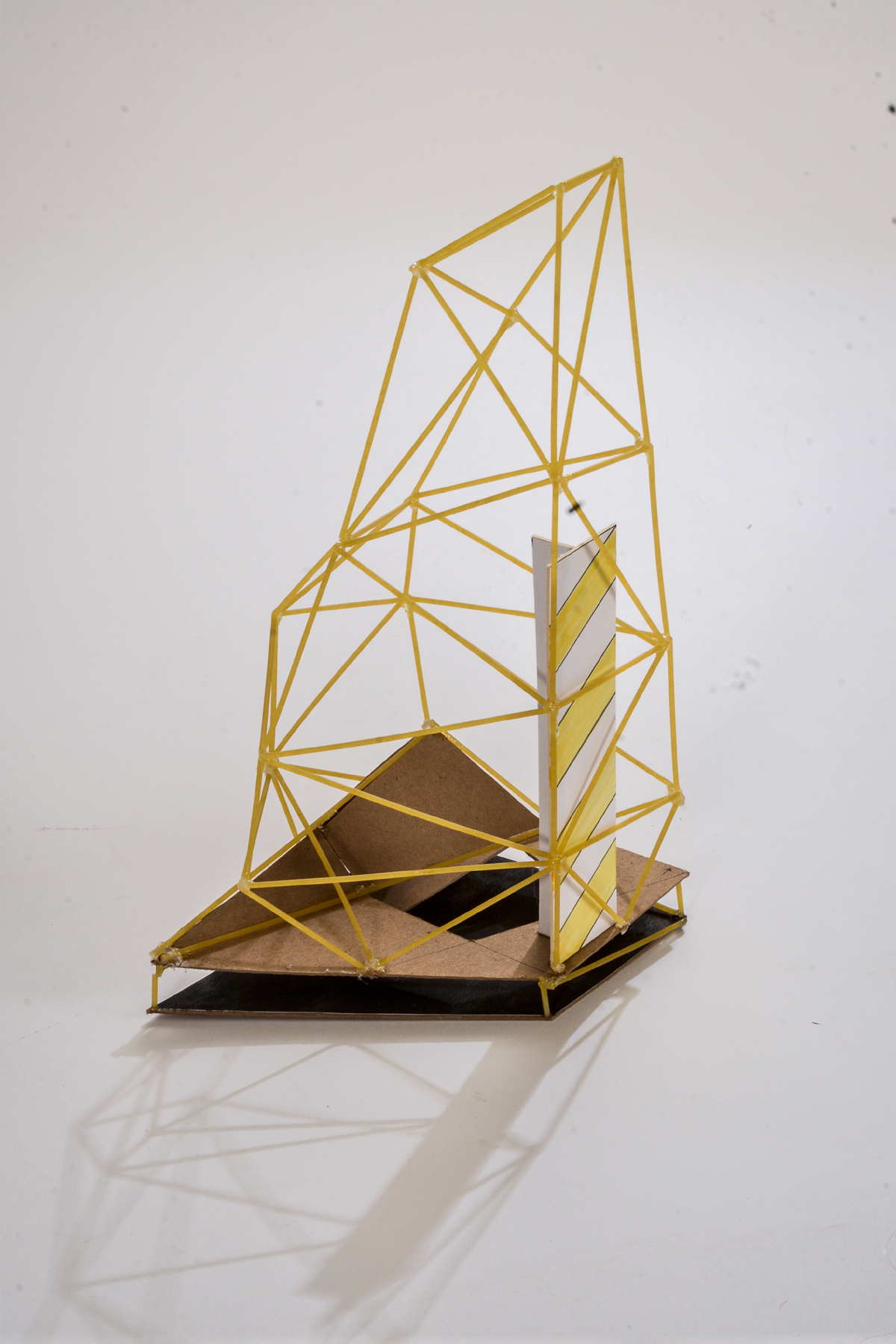

Conceptual spaghetti model showing structural system, building core, and ground plane manipulation



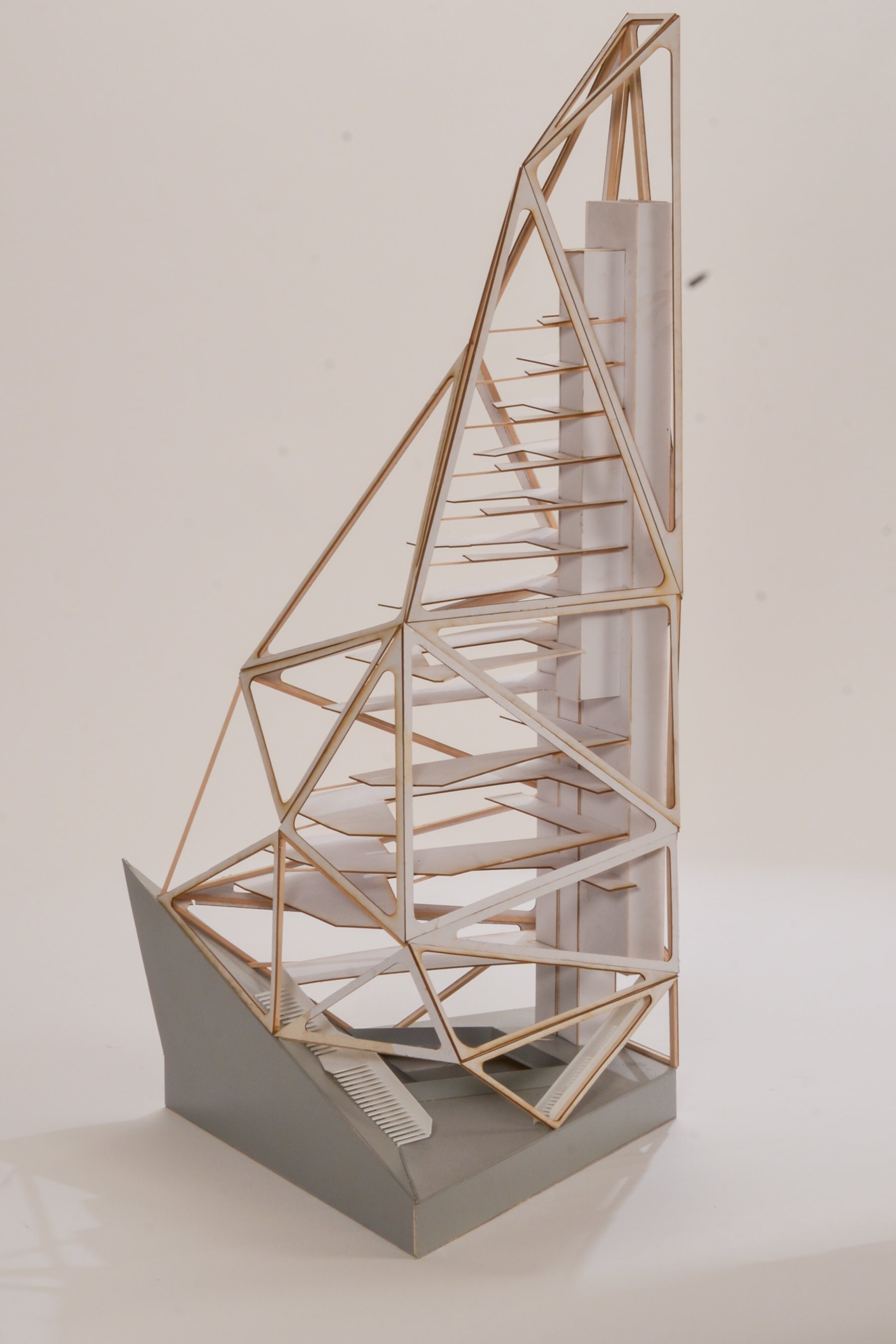
Final Drawings and Models
